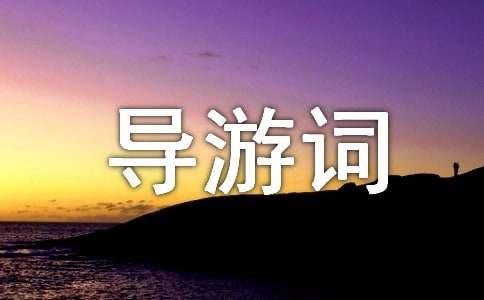湖北归元寺—英文导游词
作为一位不辞辛劳的'导游,很有必要精心设计一份导游词,导游词是导游人员引导游客观光游览时的讲解词。那么应当如何写导游词呢?下面是小编整理的湖北归元寺—英文导游词,欢迎阅读,希望大家能够喜欢。

Chinese buddhist temples are never single buildings. they always consist of a group buildings following a fundamental patter, which can, however, be modified. the main buildings and their symmetrically corresponding secondary buildings form individual groups and courtyards. the entire temple complex is spacious. the building inside the complex are usually single-storied and the main halls are sometimes decorated with a double roof. the towers, pavilions and halls can be multi-storied structures.
The chinese temple complex has been subject to great structural changes throughout the centuries. but temple architects follow the basic principles of secular structures from the tang dynasty onwards. the complexes stand on a central axis, usually a north-south axis: east-west only as an exception. (guiyuan temple is just the very exception.) the main buildings are strung along this central axis, their broadest sides facing south or east.
The most important and most frequently presented building inside a buddhist temple complex are the main entrance gate, the bell and drum towers, the hall of the heavenly kings, the hall of the buddha and a pagoda.
Buddhism is said to be founded in india in the 6th century bc by siddatha gautama (bc565 –bc486), the son of a nobleman and member of the kshatriya caste near the present borders of india and nepal. buddhism advocates that all the people are created equal and turns against the caste system of brahmanism, so it was popular with the common people.
It was said that buddhism was spread to china in 2 bc. at the beginning, it was only regarded as a kind of witch. about 200 ad, chinese version of buddhist s criptures began to appear, and thus, buddhist doctrines began to emerge with traditional chinese religious thought. from 2nd century to late 6th century, translation and research of buddhist sects with chinese characteristics were becoming more and more popular and many temples were built, which reached its peak in sui dynasty (581ad-617ad) and tang dynasty (618-907). some buddhist sects with chinese characteristics came into being. buddhism exerts a great influence on chinese philosophy, literature, art and folk customs.
What is presented before our eyes is a copper statue of a famous bodhisattva in hynayana buddhism. bodhisattva is a tittle which is only next to buddha. this statue is the image of avalokitesvara, which has been popular with chinese people or more than 1,000 years. she is called the goddess of mercy cordially by chinese and is regarded as the symbol of kindness, mercy and benevolence. when we visit the avalokitesvara pavilion after a while, i will give a detailed introduction about her. this copper statue was sent to guiyuan temple by taiwan buddhists in september 1990. it shows that all chinese, whether in the mainland or in taiwan, are eager for the reunion of the country, even including religion believers.
【湖北归元寺—英文导游词】相关文章:
湖北归元寺导游词8篇01-24
归元寺导游词15篇01-24
湖北古迹旅游导游词-湖北导游词01-11
我心中的绿色家园——森林城市12-20
久违了的运动——荡秋千01-05
武汉归元寺导游词13篇01-25
最新的湖北东湖导游词范文-湖北导游词01-05
自编故事——小牛力力求学记850字01-08
湖北一日游导游词-湖北导游词01-08
《美在你身边》——观开学第一课有感01-13